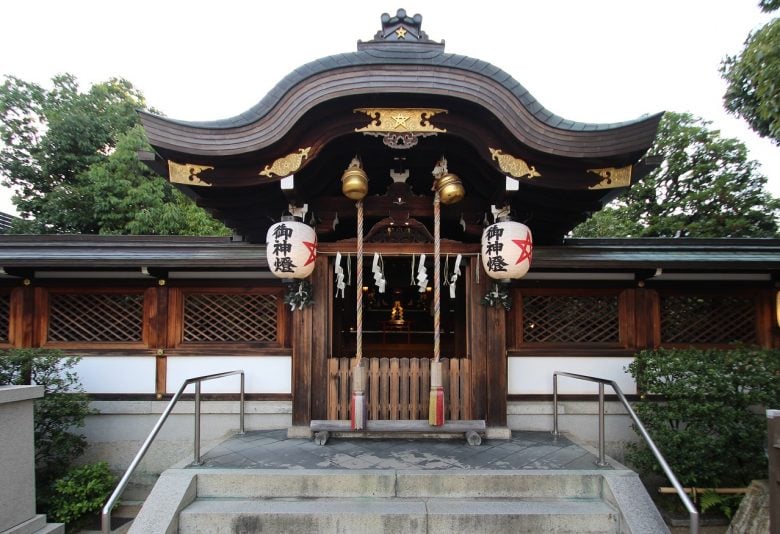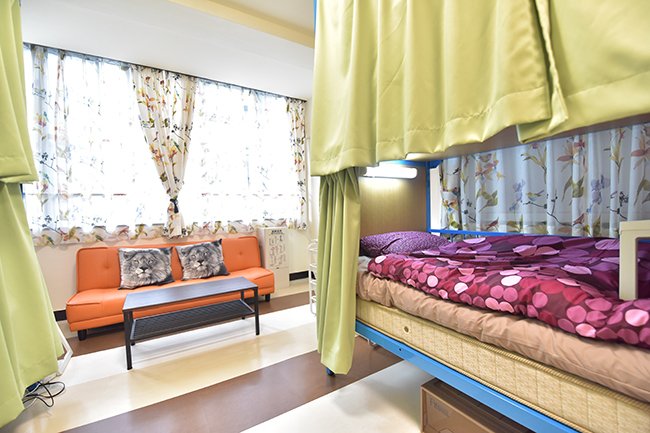
Discovering Kyoto: Seimei-jinja Shrine
A short walk towards Horikawa Dori, one of the main avenues near SAKURA HOUSE KYOTO, allows visitors to see a magical and historical sight in Kyoto, the Seimei-jinja Shrine.

Seimei-jnja Shrine is one of the most popular shrines in Kyoto. However, it is quite overlooked by those who are not aware of it’s history.
The shrine is dedicated to Abe no Seimei, a court astrologer, cosmologist and astronomer of the Heian Period. Some people around the world may have heard of him having magical powers, which is portrayed in several movies, TV dramas, novels, animes and mangas. One of the reasons for this is that fortune telling was consider as a magical trait during these times.

His reputation as diviner, adviser and astrologer to the emperor have mande him live close to the imperial court grounds, particularly on the north eastern corner of the original Imperial Palace grounds, particularly near the “Ichijo Modoribashi” bridge. The reason for this is that, as the Chinese belief goes, all evil arrives from the north-east, and Abe no Seimei was in charge of using his “powers” to protect the court. It is possible to see some of the original remains of this bridge still in the shrine’s grounds.

Seimei-jinja Shrine is now on what used to be the lodging of Abe no Seimei, and it has been constructed just 2 years after his death with the intention of keeping the court protected from evil.

When visiting the shrine, it is common to be impressed by one particular symbol, the pentagram star. This motif symbolizes the five Chinese elements of wood, fire, earth, metal and water all interconnected and used accordingly to aid several aspects such as health, design, space and time.
An interesting fact is that usually shrines uphold their name on the very top center of the main entrance “torii” gate, but for this shrine it is not its name but the pentagram symbol. This is a unique characteristic feature that surprises connoisseur travelers.

Interestingly, seeing the Japanese bellflower in the shrine is no surprise, as its flowers resemble this pentagram’s design as well.
The water from the srhine’s well is said to aid in healing any ailment and is also today drinkable water. It is said that Sen no Rikyu, the most famous exponent of the tea ceremony, used this water for his practice. There is also a commemorative stone to him within the shrine.
The water from the well falls in a diferent direction every year, showing the lucky direction for that year.

Another surprising symbol within the shrine is the appearance of a large size peach. The peach is said to be a fruit warding against evil in the ancient Chinese belief of “omiyodo”, the way of Yin and Yang based on the Taoist theory of the five elements. Rubbing one’s hand on this peach is believed to ward against evil.

Finally, the shrine grounds also keep a camphor tree of over 300 years! This type of tree used to be used for its insect repellent property. It is said that if you touch the tree with your hands, it is still possible to feel the energy of it very much alive.

During the autumn season, the shrine’s Seimei Matsuri festival takes place at the end of September for 2 days, with some purification rituals at the shrine itself and then a procession through the neighboring streets, including the street right in front of SAKURA HOUSE KYOTO R, KYOTO L and ANNEX houses!
There is plenty to enjoy while staying in Kyoto, whether it be for a study program, work or just travel. But one thing is for sure, being able to share the experience with other housemates, friends and/or family members makes it even more fun. Fortunately, we can accommodate everyone’s request, so feel free to inquire with us anytime!
SAKURA HOUSE
Nishi-Shinjuku K-1 Bldg. 2F
7-2-6 Nishi-Shinjuku, Shinjuku-Ku Tokyo, Japan
Postal code: 160-0023
Google map
- From Japan:
- 03-5330-5250
- From outside Japan:
- +81-3-5330-5250
- Mail:
- [email protected]
- Office hours:
- 8:50 am to 8:00 pm
We are open every day of the year.
- Tokyo time:
- 10:32(We are open now!)







